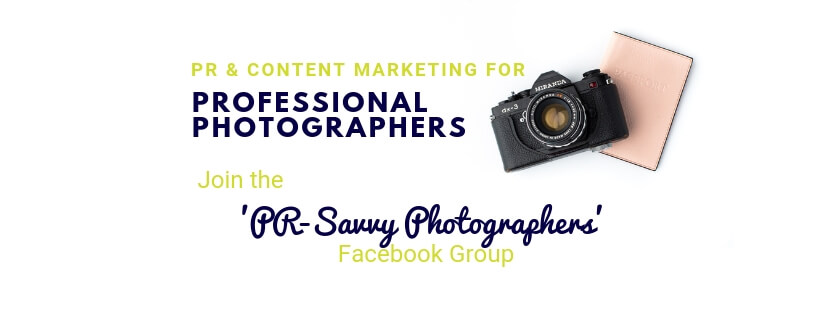The start of a new year, quarter or month are all great times to set new goals for your photography business. But there is an art to goal setting.
In this blog, I’m going to explain, firstly, why it’s important to set goals for your photography business. And, I’m going to share goal setting tips that will hopefully help you.
I hope that after reading this you’ll decide to make strategic goal setting an intrinsic part of your business planning if it isn’t already. If you do, I’m confident you’ll achieve more in your business than ever before.
Why bother setting goals for your photography business?
I believe that if you don’t set strategic goals, then it’s easy to fall into the trap of just repeating what you’ve always done (which isn’t always a good thing!).
Despite the very best of intentions, it’ll mean that you’ll lack focus and quickly slip back into bad habits, procrastinating on the tasks that are more challenging.
The thing is, it can often be that the tasks you’re putting off are actually the ones most important to the success of your overall business.
Ultimately, without goals to give you focus for your daily, weekly and monthly activities, you’ll be more likely to not achieve what you want to achieve.

The importance of kicking old habits to the curb
The truth is, your photography business isn’t going to grow or promote itself.
- You won’t suddenly start to attract more of your perfect photography clients if you just do more of what you’ve always done
- You won’t become more profitable if you keep offering discounts or lowering your prices thinking that the price is the reason you aren’t getting more bookings
- And you won’t win more clients if you’re failing to clearly communicate your value to prospective customers in a way that is compelling to them.
Doing the same old, same old will likely mean fewer bookings, less work, reduced income, and the dreaded ‘feast and famine’ cycle that literally cripples your cash-flow. It’ll also lead to more frustration and dissatisfaction, which can bring on self-doubt and a lack of confidence in your business. Not things that I’m sure you are aspiring to!
So, while the act of setting goals isn’t the key to success – of course, you need to follow through and do the work – the very act of being intentional in your business and setting goals for yourself, I believe, is a great step in the right direction!

Goal Setting
Creating beautiful images is not enough to ensure your success as a professional photographer. Strategic business planning is absolutely crucial if you want to move forward and make this year your best ever.
Related reading: The fundamentals of successful photography marketing
We’re all human after all! Without goals and a plan for our business, how on earth do we expect to keep on track, to keep focussed, motivated and to ensure we are doing the right things day in and day out?
Convinced yet? OK, great. Onto the tips…
Goal setting tips for photographers
Set SMART goals
S.M.A.R.T. goals are Specific, Measurable, Attainable, Realistic, and Time-bound.
- SPECIFIC: You need to have a specific goal to focus on (“I want to win more clients this year” is a really bad example! I want to secure 4 bookings every week” is better.)
- MEASURABLE: Your goal should be measurable so that you know if you have achieved it or not. Being specific about the number of clients you want to book in or the target number of people on your email marketing list, for example, make measurement easy if you know the numbers you’re starting and ending with.
- ATTAINABLE: Making your goals either too easy or too hard to achieve will not help you, or keep you motivated. Your goal should be something that currently feels out of reach, but that you could achieve if you worked hard.
- REALISTIC: You also need to be realistic when setting your goals. Set your goals while being mindful of the commitments and constraints on your time and energy – is the goal really feasible?
- TIME-BOUND: A deadline also is crucial so that you have a set amount of time in which to strive to complete the goal. I set daily goals, weekly goals, monthly goals and 90-day goals. From experience, I think it’s best to keep deadlines up to a maximum of 90 days so that you don’t lose enthusiasm over a longer period of time.
If you’d like to know more, check out this video for a deeper explanation of what SMART goals are.

How to create goals for your photography business that you’ll actually achieve
The key to creating goals that will actually serve you is to be specific about your vision for the future.
You’ll need to ask yourself a series of questions about how you want the future to pan out, and then to work backwards from that vision, breaking down the overall goal into smaller action steps.
Step 1: Define the vision
For example, by this time next week/month/quarter/year, what will you want to have achieved?
Let’s say you are planning a photography exhibition next month, with proceeds going to a local charity, and want to have the event featured in your local newspapers and on local radio in order to drive footfall to the event.
A possible goal could be that you’d like to secure, say, 10 media mentions across local media channels before the day of the event in order to help promote it to local people.
Step 2: What are the key steps along the way to achieving this?
Knowing this, then you can break that achievement down into smaller milestones.
So, in this example, during the research phase for this, you’d typically need to:
- Carry out local media research
- Write a media pitch or press release, highlighting the newsworthy elements of the story
- Collate images to send to the media
- Submit the media pitch
Then they’d be further tasks related to contacting the media and following up with them etc.
Step 3: What specific actions do you need to complete?
To complete the milestones you’ve identified in step 2, you’ll need to allocate time for each, breaking each one down into more specific actions or tasks until you get to a level of detail that is more like a to-do list.
So, for example, for milestone one in the above list, ‘Write a media pitch’, you’ll need to:
- define the potential news value in the story
- clarify the key details that would be of interest to the media – date, time, location, any VIP’s attending etc.
- source a comment from the charity’s spokesperson
- and then, write a press release in an informative promotion-free style summarising all this information.
In the ‘media research’ stage, you’ll need to:
- Determine what local publications/media outlets there are that you could target
- Identify who are the writers/editors or producers who might be relevant to approach
- Determine whether they have a local events section or feature that would be the ideal place to get your event mentioned
- And, understand how far in advance you’d need to get in touch with them in order to be considered for inclusion.
Each task should ideally take no longer than one hour to complete. If it does, then break the task down even further before proceeding to step 4.
Related reading: How to write a press release for your photography business
Step 4: Plot out the required actions/tasks into your calendar
Getting specific tasks into your diary is the next step to achieving your goals.
Spread out the tasks across your working day or week, being mindful of the deadline you’ve set yourself for the achievement of the overall goal. Be sure to leave enough time for you to complete the necessary tasks in good time while also being flexible enough to change things around if necessary.
And don’t try to achieve too much each day. I tend to give myself no more than three main things to achieve each day, then if I have time to achieve more, that’s a bonus.

How to keep focused on your photography business goals
I hope that this article and the goal-setting outline example I’ve given above helps you to understand why and also how to create goals that will help you move forward in your business? Do let me know in the comments if you have any questions on this.
Finally, before I go, there are three further tips I’d like to share as well. These are three things I do in my own business that help me to get focused on my business goals. Perhaps they may also help you?
-
Act like the C.E.O. of your business
Every single week in my business, I set aside a day to focus exclusively on business development. Mondays are my ‘Marketing Mondays’ and it’s when I hold myself accountable and focus on the things that will help me to grow my business.
It’s when I do the big-picture planning and also the more tactical work like scheduling social media posts, writing blog posts, creating newsletter campaigns, and tweaking my website.
This has been a game-changer for me. Although I struggled to justify that time off from income-generating client work initially, I quickly realised that if I never scheduled time in for this kind of work, it would never get done.
-
Follow a ‘90 day’ planning format
The concept of the ’90 day year’ was introduced to me a few years ago and I’ve found that it’s key to beating overwhelm (planning for an entire year can seem sooooooooo impossible), and also giving focus.
Splitting the year into four quarters, or sets of 90 days, is much more manageable.
I don’t plan a year in advance. I do think about the bigger picture, but when it comes to the nitty-gritty of content planning, for example, I just tackle the year in smaller sections. Three months in advance, or even one month at a time, is far easier to manage.
Related reading: Quarterly reviews: Goal setting and planning tips for photographers
-
Use planning tools
The other thing I do is use planning tools to help me map out my to-dos for the quarter, month, week and each day.
I’ve been a huge fan of Trello for years now, and love that it is a place to store ideas and to-do lists which are easily edited and moved around across ‘boards’ I create within my account. I use Trello to create reminders, checklists, and every evening I plan out the actions I need to take the following day. Why not try it out? It’s free!
This year, I’m also using a physical planner to outline my schedule for each day, my goals, and a breakdown of the tasks I need to complete. It’s also a gratitude journal in that it encourages me to reflect, day and night, on the positives of every day, as well as the wins and lessons learned.
It works perfectly alongside the daily journal entries that I create and refer back to when completing my monthly, quarterly and annual reviews.
Related reading: How to do an annual review of your photography business
What goals have you set yourself this year? And what tools do you use when goal setting and planning? Do let me know in the comments below.









Thank you for this great article! I am trying to organize my photography business site and it has been really helpful. I’ll be back for sure!
Thank you for your kind words! I’m pleased to hear it’s been useful.